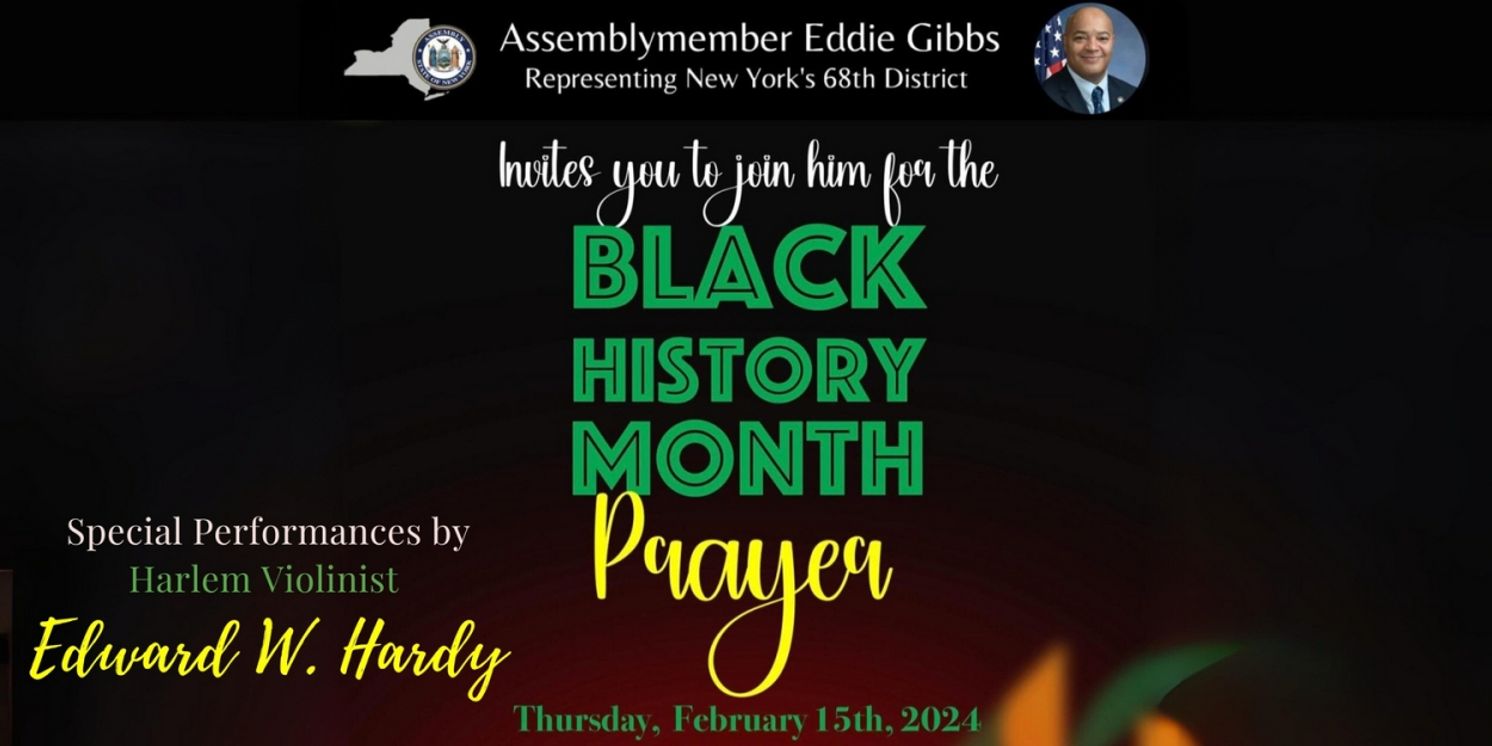Assemblymember Eddie Gibbs' to Hold Prayer In East Harlem Today
Violinist Edward W. Hardy will perform original music of prayer for residents of Harlem and NYS government officials.

On February 15, 2024, Assemblymember Eddie Gibbs will be holding a prayer at the Harlem African Burial Ground from 2:30-3:30PM to honor and remember the souls that rest at the site. Violinist Edward W. Hardy will perform original music of prayer for residents of Harlem and NYS government officials.
There are limited spots so make sure to RSVP.
ABOUT
Assemblymember Edward "Eddie" Gibbs represents New York's 68th district, which encompasses East Harlem and Randall's Island as well as parts of the Upper East Side and Central Harlem.
At heart, Eddie is a community organizer who was shaped by his upbringing in East Harlem where he grew up with limited financial resources and tough prospects for the future. Even before he held an official title, he dedicated his life to serving and supporting his neighbors.
As the first formerly incarcerated person to serve in the New York State Legislature, and only the second to serve in any U.S. state legislature, Eddie brings a critical perspective to Albany. At only 17 years old, Eddie turned himself in after committing a crime. He served time in prison and then returned to the community where he was dedicated to creating positive change. He credits his incarceration with turning his life around and is motivated as an elected official to make sure that everyone has chances in life right from the start, free from violence and poverty.
As a community leader for over two decades, Eddie has held annual coat drives for seniors and people experiencing homelessness, Thanksgiving dinners, Christmas toy giveaways, back-to-school supply drives for underprivileged kids and numerous other events. At the height of the COVID-19 pandemic, Eddie cared for vulnerable seniors and distributed food, water and PPE. He often sat with elderly people in the community to help them find vaccine appointments, sometimes walking neighbors to their appointments. His leadership has also extended past New York; Eddie responded to the Flint, Mich., water crisis by bringing three vehicles filled with water to the city. In his role as an activist, Eddie has also protested police brutality, took part in the Occupy Wall Street movement and was arrested with 11 other members of the National Action Network for protesting one of President Trump's Supreme Court nominations.
Eddie received his Associate Degree in business administration from Cayuga Community College.
Edward W. Hardy is a critically acclaimed Black and Puerto Rican composer, music director, virtuoso violinist and violist. Recognized as one of the foremost exponents of solo violin repertoire for theatrical productions, Hardy served as the composer, music director and violinist of the sensational Off-Broadway show "The Woodsman," earning the 2016 Obie Award, 2014 Jim Henson Foundation Grant, and was broadcast on PBS stations four separate times.
While remaining dedicated to arts education and creative entrepreneurship, Hardy is the founder and artistic director of the Omnipresent Music Festival - BIPOC Musicians Festival, the co-founder/past senior director of operations of the Northern Colorado Center for Arts Entrepreneurship, and the previous digital marketing director and artistic advisor of the Beethoven in the Rockies Concert Series.
Over the past decade, Hardy held violin teaching/ performing residencies and, as a visiting artist, gave masterclasses and lectures at numerous music programs and universities spanning New York City to Los Angeles, California. Currently pursuing a Doctor of Arts degree and serving as a graduate instructor in violin performance at the University of Northern Colorado, he remains an active and dedicated performing artist throughout the United States, venues including Carnegie Hall, Lincoln Center, the Kennedy Center, and many others.
Currently, Hardy's discography contains 8 singles, 1 album, and his list of original compositions include works for solo violin, voice, harp, piano, string quartet, string trio, string duo, Latin ensemble, and soundtracks for film and stage. Mr. Hardy has research in non-traditional string techniques and beyond his history of premiering contemporary works, his dissertation, A Compendium of Three Musical Works Inspired by the African American Experience: Recordings, Commentary, and Pedagogical Observations, is scheduled to be published in May 2024.
Harlem African Burial Grounds*
The 126th Street Harlem African Burial Ground Memorial and Mixed-Use Project honors and memorializes an important part of the city's history and addresses needs of the East Harlem community. The 2.7-acre project site is a full Manhattan city block located at 126th Street and 2nd Avenue in East Harlem that is currently occupied by the MTA's decommissioned 126th Street Bus Depot. The historic footprint of the Harlem African Burial Ground occupies 0.4 acres on the southeast portion of the site.
The village of Nieuw Haarlem was established by Dutch royal charter on August, 15 1660, and the Low Dutch Reformed Church (predecessor of today's Elmendorf Reformed Church) was its founding place of worship. From the beginning, the church maintained two cemeteries: one for people of European descent, and another for people of African descent. For more than two centuries, New Yorkers of African descent were buried at the Harlem African Burial Ground. They played a crucial role in the early history of the city, and their history is New York City and Harlem's history.
In the mid-1800s, prompted by the northward expansion of the city, the land the Harlem African Burial Ground sat on was sold. In the decades that followed, hills were leveled, parts of the Harlem River were filled in and multiple land transactions, redevelopments, and urbanization occurred on and around the site, all causing considerable displacement of the historic cemetery.
In the early 2000s, during the beginning construction stages of the nearby NYCDOT Willis Avenue Bridge Reconstruction project, a Phase 1A archaeological assessment for that project suggested that the historic Harlem African Burial Ground was located within the site's boundaries. At the time, the site was actively used by the MTA as the 126th Street Bus Depot which covers the entire site's footprint. The bus depot, originally built in 1947, currently stands on the site.
*126th Street Harlem African Burial Ground Memorial and Mixed-Use Project." NYCEDC, edc.nyc/project/east-126th-harlem-african-burial-ground-project.
Videos
